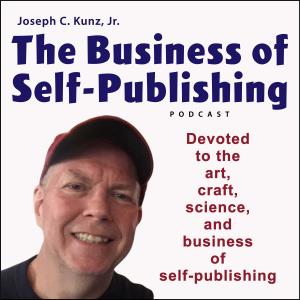The Business of Self-Publishing

What Is Self-Publishing?: A Quick Overview
Synopsis
Self-publishing is where you, the author, bypass all the intermediaries that are involved in traditional publishing. These intermediaries do the editing, designing, illustrating, marketing, promotion, etc. of your book. As a self-publisher, you get to choose which functions you want to do, and which ones you need to hire someone to help you.
What You Will Learn
1. You will learn how I define what self-publishing is all about for me.
2. You will learn why I find it important to define self-publishing as a business.
3. You will learn about the 3 main stages that the process of self-publishing can be broken down into.
Introduction: Bypass Intermediaries
Self-publishing is where you, the author, bypass all the intermediaries that are involved in traditional publishing. These intermediaries do the editing, designing, illustrating, marketing, promotion, etc. of your book. As a self-publisher, these functions will typically be your job.
Although, you can easily hire people to do these functions for you and still be considered a self-publisher. As a self-publisher, you get to choose which functions you want to do, and which ones you need to hire someone to help you.
It’s A Business
In other words, self-publishing means that you manage and finance a business dedicated to producing and selling your book. In most instances, your business’s goal is to make a profit by creating a product that sells enough copies to cover the expense of creating it, marketing it, promoting it, and distributing it.
Many enter self-publishing as a means to promote their other business. Some enter self-publishing as a way to capitalize on the many years of experience that they have gathered during their career. By self-publishing, these people can share their experiences by writing about them, and also earn an income from it – thereby extending and enhancing their career.
Develop, Produce, Sell
The process of self-publishing can be broken down into three broad stages:
• Stage 1: Development: which involves planning, writing, editing, designing, indexing, and illustrating the book;
• Stage 2: Production: which involves preparing the book for printing, and getting it printed; formatting the book as a pdf and also as an ebup, and,
• Stage 3: Selling: which involves marketing, promoting, and selling yourself and the book.
Retain Ownership
In the past, many authors chose to self-publish because they could not get a traditional publisher to publish their book. But today, with the help of the computer, some basic software, and the internet, many authors eagerly and gladly choose self-publishing so that they can retain full creative control over their creation – their book.
By retaining control and ownership over their book, they can profit from it for many years. With a big traditional publisher, a book will typically have a very limited lifespan.
Conclusion: Fun And Profitable
Self-publishing is a very powerful, exciting, and alluring concept. On its simplest level, it’s a way to get your words and ideas to a worldwide audience. On an artistic level, it’s an extension of the creative process. Self-publishing is a fun, interesting, and profitable way to satisfy your need to create a product, share it with the world in an appealing way, and make money doing it.
Questions For Us To Think About And Discuss
1. As a self-publisher, which functions do you like to do? Which ones do you prefer to hire out?
2. Are you entering self-publishing to share your knowledge with as many people as possible? Or as an artistic outlet? Or simply to make a profit? Or all three?






 Visit Podcast Website
Visit Podcast Website RSS Podcast Feed
RSS Podcast Feed Subscribe
Subscribe
 Add to MyCast
Add to MyCast